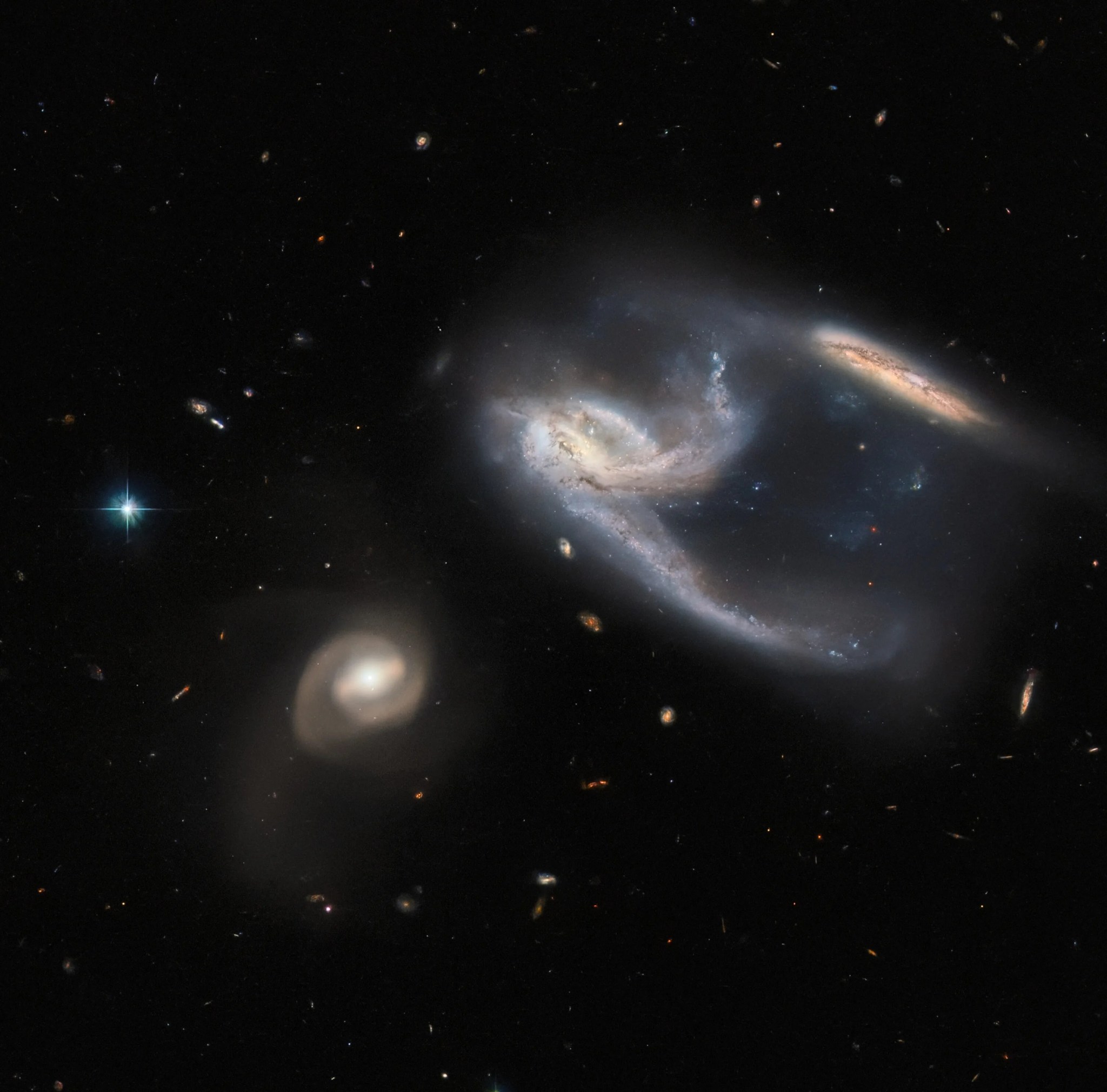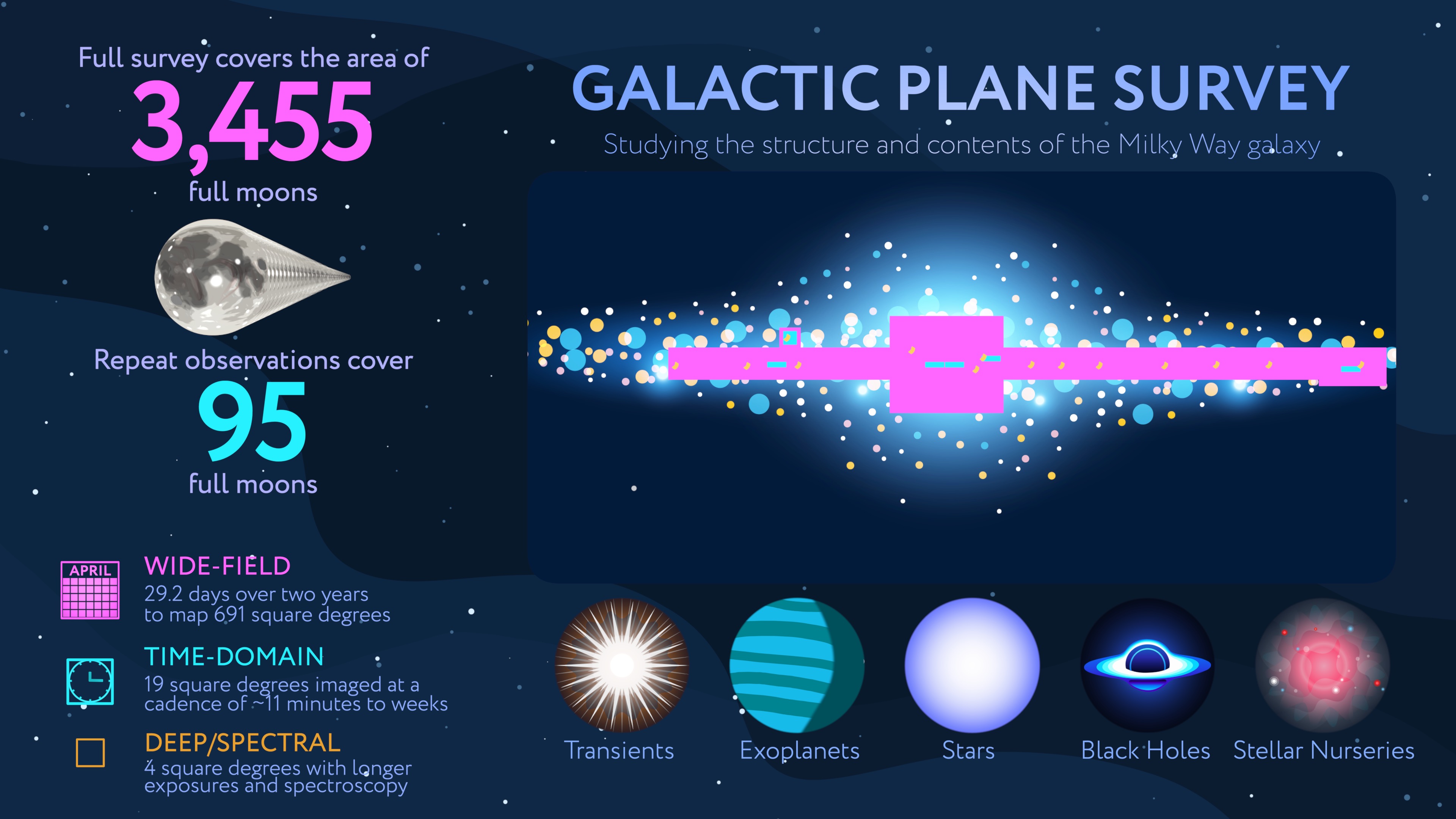The subject of this image is a group of three galaxies, collectively known as NGC 7764A. They were imaged by the NASA/ESA Hubble Space Telescope, using both its Advanced Camera for Surveys and Wide Field Camera 3. The two galaxies in the upper right of the image appear to be interacting with one another. The long trails of stars and gas extending from them give the impression that they have both just been struck at great speed, thrown into disarray by the bowling-ball-shaped galaxy to the lower left of the image. In reality, interactions between galaxies happen over very long time periods, and galaxies rarely collide head-on with one another. It is also unclear whether the galaxy to the lower left is interacting with the other two, although they are so relatively close in space that it seems possible that they are. By happy coincidence, the collective interaction between these galaxies has caused the two on the upper right to form a shape, which from our solar system's perspective, resembles the starship known as the USS Enterprise from Star Trek!
NGC 7764A, which lies about 425 million light-years from Earth in the constellation Phoenix, is a fascinating example of just how awkward astronomical nomenclature can be. The three galaxies are individually referred as NGC 7764A1, NGC 7764A2, and NGC 7764A3. This rather haphazard naming makes more sense when we consider that many astronomical catalogs were compiled well over 100 years ago, long before modern technology made standardizing scientific terminology much easier. As it is, many astronomical objects have several different names, or might have names that are so similar to other objects’ names that they cause confusion.
Text credit: European Space Agency (ESA)
Media Contact:
Claire Andreoli
NASA's Goddard Space Flight Center
301-286-1940
































